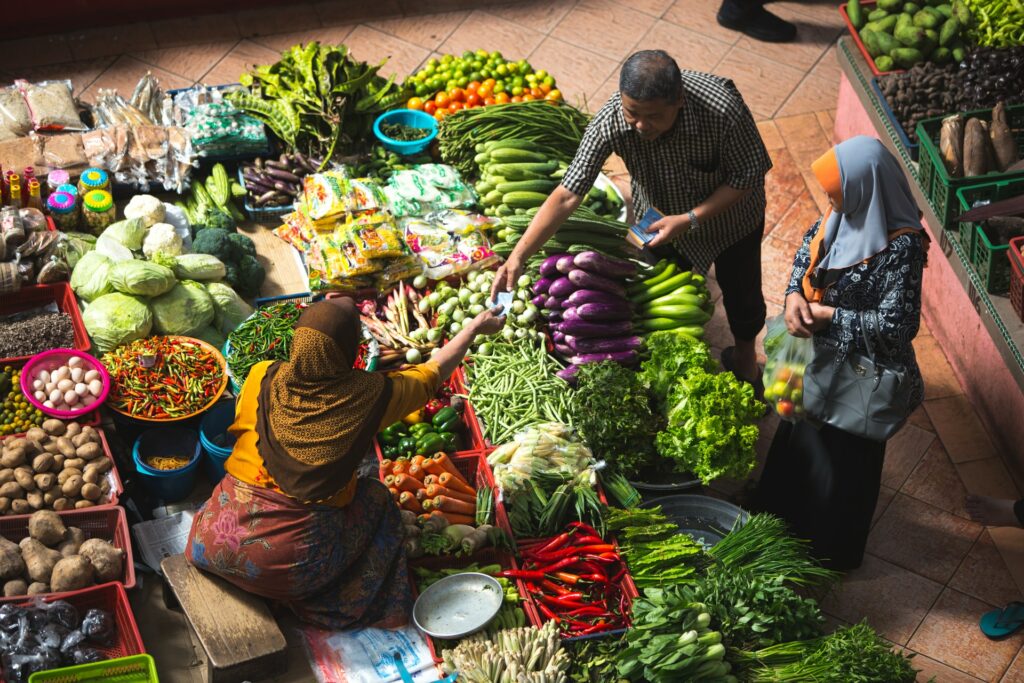
How we produce and consume food has become unsustainable and is also a contributor to climate change; therefore, our food systems require transformation. This transformation is not only needed to address food insecurity but should also address nutrition, health, and poverty which promotes sustainable development. So, what is the problem with the current system of food production? We have been producing food to meet the demands of a growing population, which are high in calories and low in nutritional value. This way of production was designed solely for demand and supply where only some nutrients are available, at cheap prices to sustain global communities. In the past; this way of production did not place importance upon environmental protection or the consequences of agricultural practices. Over time, this has led to a food system that causes more harm than good, to humans and the environment. Whilst current-day food production is also a major contributor to greenhouse gas emissions (GHGs), further exacerbating climate change.
Years of agricultural intensification and globalization have led to the degradation of land, soil, and water resources. There is also an increase in urbanization, and economic and social inequalities; leaving many marginalized communities without equitable access to food security. Additionally, this has led to dietary changes which cause many food-related health problems due to a lack of sufficient nutrition. Food security is when people are physically and economically able to access food at all times, which also meets their dietary requirements in order to lead a healthy and nutritious life. Ensuring that food security is achieved is an enormous task that requires interactions from all role players involved in food systems along the entire value chain. To meet the growing demands of food production in a way that considers the multiple interactions of the environment, society, and economy, more research into food system transformations is needed.
Food system transformations should not only concentrate on minimizing the environmental impacts but should also be able to transform in a way that is able to provide nutritious food to all which meets the dimensions of food security. As outlined by the High-Level Panel of Experts (HLPE) these dimensions are availability, access, usage, stability, agency, and sustainability. The importance of food system transformations is becoming more prevalent as the world faces ongoing challenges such as COVID-19, increasing levels of malnutrition, food shortages, land degradation, and many more. The vulnerable regions of the world are left exposed to many challenges relating to environmental, socio-economic, and political outcomes. Poor dietary patterns, along with the growing challenges faced by developing countries, have increased the prevalence of malnutrition. Hunger leads to undernutrition problems such as stunting, underweight, and wasting, whilst overeating which can be seen in some developing countries leads to obesity and non-communicable diseases (NCDs) caused by poor diet and lifestyle habits. Furthermore, insufficient amounts of vitamins and minerals in a diet lead to the possibility of increasing health problems.
The challenges mentioned above affect every country across the globe; however, the impacts of climate change on food systems are expected to have severe effects on African countries due to the multitude of vulnerabilities faced by many African countries. It is important to recognize that in the efforts to transform food systems, reaching those furthest behind is imperative. People and communities who are furthest behind consist of those who face marginalization due to a number of factors such as race, gender, economic status, level of education, physical abilities, ethnicity, and many more. Food insecurity within marginalized communities continues to hamper growth and development; therefore, approaches that advocate for sustainable and nutritious food systems are essential.
References
https://www.karger.com/Article/Fulltext/487605
ERICKSEN, P. J. 2008. Conceptualizing food systems for global environmental change research. Global Environmental Change, 18, 234-245.
WILLETT, W., ROCKSTRÖM, J., LOKEN, B., SPRINGMANN, M., LANG, T., VERMEULEN, S., GARNETT, T., TILMAN, D., DECLERCK, F., WOOD, A., JONELL, M., CLARK, M., GORDON, L. J., FANZO, J., HAWKES, C., ZURAYK, R., RIVERA, J. A., DE VRIES, W., MAJELE SIBANDA, L., AFSHIN, A., CHAUDHARY, A., HERRERO, M., AGUSTINA, R., BRANCA, F., LARTEY, A., FAN, S., CRONA, B., FOX, E., BIGNET, V., TROELL, M., LINDAHL, T., SINGH, S., CORNELL, S. E., SRINATH REDDY, K., NARAIN, S., NISHTAR, S. & MURRAY, C. J. L. 2019. Food in the Anthropocene: the EAT–Lancet Commission on healthy diets from sustainable food systems. The Lancet, 393, 447-492.